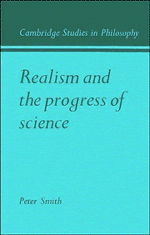Summary
Philosophers of science have always been exercised by the problem of the extent to which scientific theories may be said to describe things that exist. We can characterize this problem as one of reference. It might be posed as a question: what can we say, on the basis of our scientific theories, about what there is in the world? The fundamental tenet of the realist's view of science is that those things referred to in a theory of an established science do exist. There are gravitational fields, muons and black holes, just as there are planets, mammals and bacteria. A second traditional problem has been that of whether it makes sense to describe scientific theories as true or false. This problem can be characterized as one of predication. Again the realist's answer is clear: the statements contained in a scientific theory are either true or false. For any given statement we may not now be in a position to say which it is, but we can at least conceive of what it would be for it to be true or false.
Though distinct, the problems of reference and predication are not divorced, for one way of explaining what it is for a statement to be true is by showing how things in the world can be as it says they are.
- Type
- Chapter
- Information
- Realism and the Progress of Science , pp. 1 - 3Publisher: Cambridge University PressPrint publication year: 1981



